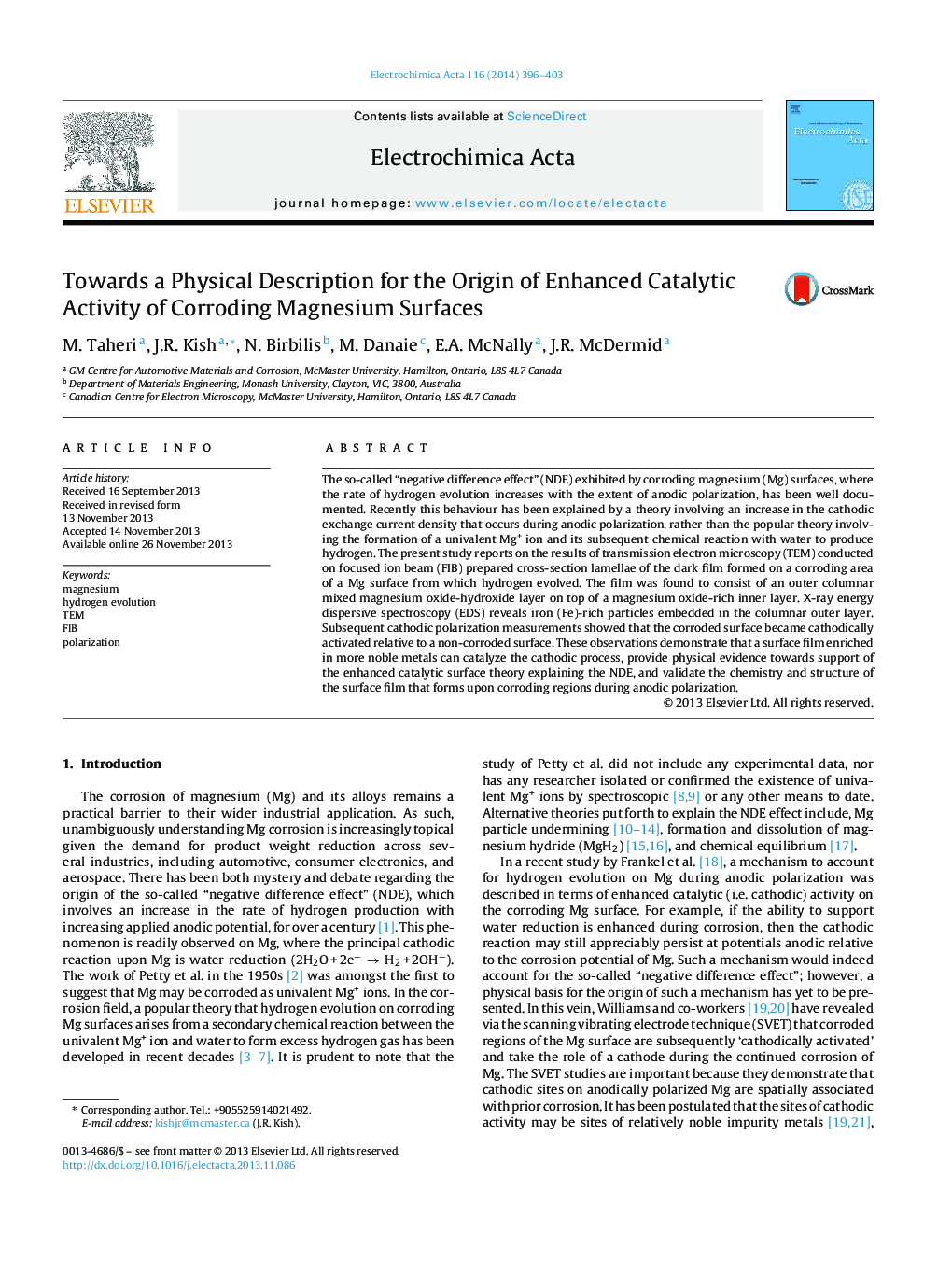| Article ID | Journal | Published Year | Pages | File Type |
|---|---|---|---|---|
| 6614146 | Electrochimica Acta | 2014 | 8 Pages |
Abstract
The so-called “negative difference effect” (NDE) exhibited by corroding magnesium (Mg) surfaces, where the rate of hydrogen evolution increases with the extent of anodic polarization, has been well documented. Recently this behaviour has been explained by a theory involving an increase in the cathodic exchange current density that occurs during anodic polarization, rather than the popular theory involving the formation of a univalent Mg+ ion and its subsequent chemical reaction with water to produce hydrogen. The present study reports on the results of transmission electron microscopy (TEM) conducted on focused ion beam (FIB) prepared cross-section lamellae of the dark film formed on a corroding area of a Mg surface from which hydrogen evolved. The film was found to consist of an outer columnar mixed magnesium oxide-hydroxide layer on top of a magnesium oxide-rich inner layer. X-ray energy dispersive spectroscopy (EDS) reveals iron (Fe)-rich particles embedded in the columnar outer layer. Subsequent cathodic polarization measurements showed that the corroded surface became cathodically activated relative to a non-corroded surface. These observations demonstrate that a surface film enriched in more noble metals can catalyze the cathodic process, provide physical evidence towards support of the enhanced catalytic surface theory explaining the NDE, and validate the chemistry and structure of the surface film that forms upon corroding regions during anodic polarization.
Related Topics
Physical Sciences and Engineering
Chemical Engineering
Chemical Engineering (General)
Authors
M. Taheri, J.R. Kish, N. Birbilis, M. Danaie, E.A. McNally, J.R. McDermid,
